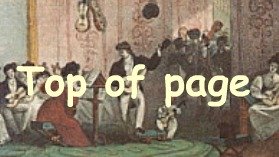The Biography
of Francesco Corbetta
c. 1615-1681
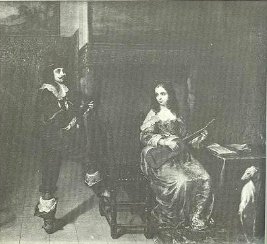
This Italian Maestro of the Baroque guitar was a native of Pavia. Little is known of his early life, but by 1639 he had certainly begun his musical career in the university town of Bologna, working as a teacher. The university of Bologna is acknowledged as the oldest continually operating university in the world. Next we find him playing in the court of Archduke Leopold Wilhelm in Brussels, where in 1648 he published his third opus, and then on to Paris in 1656. Here, where he was known as "Francisque Corbette", he appeared in a court ballet under the direction of his expatriate countryman, Jean-Baptiste Lully, in which King Louis XIV , also known as the "Roi Soleil", performed one of the dancing roles. Corbetta was also a guitar tutor to the royal court, and counted King Louis XIV amongst his pupils.
Around the age of 24 years his first modest collection of guitar pieces was published. The dedications in this book reveal that he taught and was patronized by many important noblemen and church dignitaries.
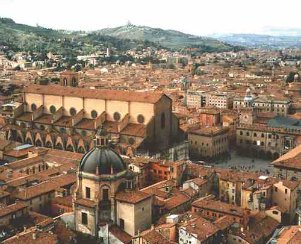
found patronage amongst
Noblemen and church dignitaries
Included amongst his students was a young Giovanni Battista Granata, who later was one of Francesco Corbetta's chief rivals, and a prolific composer for the Baroque guitar. A second book appeared in 1643, this one dedicated to Carlo II, Duke of Mantua whom Corbetta had been in the employ of. He was in high demand as a guitarist in many of the royal courts of Europe, and between 1644 and 1653 travelled widely visiting Austria, Spain, Netherlands and Germany.
performed by Daniel
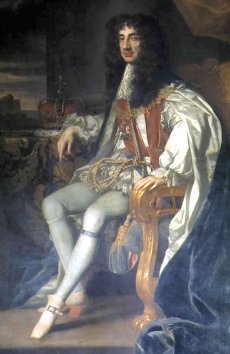
English King, Charles II, Corbetta
found his fortune as a guitar tutor
in the Royal court
August 5, 1667 After done with the Duke of York, and coming out through his dressing room, I there spied Signor Francisco tuning his guitar, and Monsieur de Puy, with him who did make him play to me which he did most admirably - so well that I was mightily troubled that all that pains should have been taken upon so bad an instrument. (wikipedia) Evidently Pepys too succumbed to the allurements of the 'bad instrument', as the inclusion of Cesare Morelli's guitar tutor in his library (which still stands intact in Cambridge) suggests.
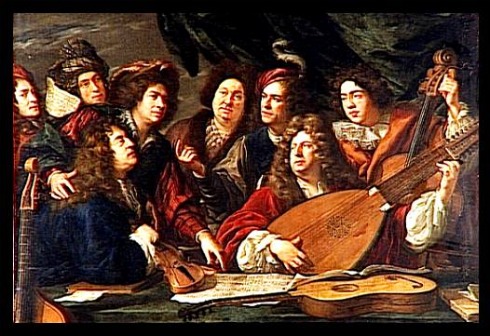
court, note the Baroque guitar lying on the table
The 5-course Baroque guitar was Francesco Corbetta's sole focus in all his publications. Three appeared in the Italian style, featuring mostly strummed dance music, in 1639, 1643, and 1648. Much later, in 1671 and 1674, two French style collections were published, one dedicated to the King of France and the latter to the King of England. These exhibit a great mastery over the combination of strummed and plucked textures, and included instruction on the use of the guitar in the role as a continuo instrument.
Other Baroque guitar composers :
- Giovanni Paolo Foscarini
- Angelo Michele Bartolotti
- Francesco Corbetta
- Giovanni Battista Granata
- Gaspar Sanz
- Robert de Visee
- Silvius Leopold Weiss
|
|
Jean-Baptiste Lully's |
